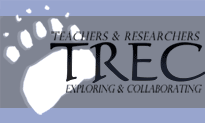 |
|
|
| Author |
Message |
Scott_McComb
Joined: 23 Mar 2004
Posts: 38
Location: Fort Hayes Metropolitan Education Center

|
 Posted:
Sun Jun 13, 2004 2:17 am Posted:
Sun Jun 13, 2004 2:17 am |
  |
Sunday, June 12
The days are starting to blend into each other; the 24 hours of light blurs the line between one day and next. Sleeping at night still feels like a nap. Yesterday the first wisps of cirrus clouds appeared in the sky; this morning, shadows of cumulus clouds danced across the tundra. The ice on the lake has been melting quickly; with the morning’s breeze from the north, the ice started to push into the shoreline, the rhythmic creaking of the seasons on a well-worn floor.

This morning, we started the photobleaching experiment: photo – light; bleaching – bleaching (duh). In this experiment, Penney is measuring how light affects water from different lakes (with different amounts of dissolved organic carbon). “Ohhhh,” you say (don’t even try to deny it: I hear you now) and think “Who cares?”
It goes like this: dissolved organic carbon absorbs harmful ultraviolet light, preventing it from harming the bacteria, algae and other organisms that make their home at the surface of the water. Dissolved organic carbon acts at a sponge from organic pollutants. Then, when the carbon does break down, the pollution the carbon has sucked up gets broken down too. At least that’s our hypothesis. Penney is investigating how light changes the properties of dissolved organic carbon and its ability to absorb (and eventually help degrade?) organic pollutants.


You may be wondering why some lakes have more dissolved organic carbon than others. The answer is still a mystery and worth a PhD.
Interesting fact to make you smarter:
Ultraviolet light has a tricky time traveling through glass or plastic, but travels quite easily through water (and quartz… thus, the quartz tubes to hold the samples). If you’re fair-skinned, playing in the water will not protect you from sunburns.
Amanda’s Limerick
To the Arctic a group of us went
Some were brave enough to sleep in their tents
The nights they were mild
And the scenery wild
Too bad our autosampler got bent. |
_________________
~Scott |
|
    |
 |
|
|
|
View next topic
View previous topic
You cannot post new topics in this forum
You cannot reply to topics in this forum
You cannot edit your posts in this forum
You cannot delete your posts in this forum
You cannot vote in polls in this forum
You cannot attach files in this forum
You can download files in this forum
|
Powered by phpBB 2.0.11
© 2001, 2002 phpBB Group :: FI Theme ::
All times are GMT
| |
